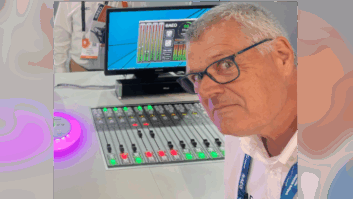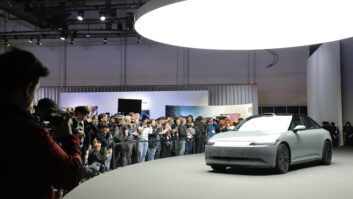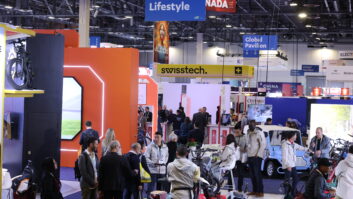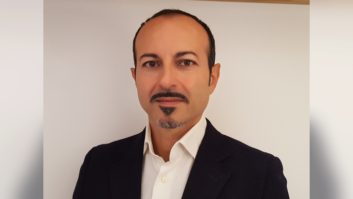A new Radio World ebook explores trends in the design and use of radio consoles.
Clay Walker is vice president of content operations for Audacy. He works intimately with its studio technology design, infrastructure and automation systems.
Radio World: Clay what would you say is the most important recent or ongoing trend in the design of consoles for radio broadcast studios?
Clay Walker: Flexibility is key. With broadcast consoles being the heart of our operation, having the ability to move sources, endpoints, layout and function is critical to our ability to serve our fans regardless of where they consume our content.

We lean into our strategic partners at Telos Alliance to build a frictionless content creation studio that can be utilized for a live and local morning show and then quickly convert to network headend for a national midday show, voicetrack studio or a home for social video production when an artist stops by. Our talent does it all with such grace and our console systems should follow suit.
RW: What will the console of the future look like, if we use one at all?
Walker: We’re living in a world of virtualization, and I see a future where a browser-based audio console can send commands to a mix engine.
I’d also like to see our future leaning into AI, making source decisions, mix levels and other controls for our talent predictive. This way, they can focus on connecting with our fans, not trying to ensure their mic channels are hot enough.
RW: What are the implications of software- and cloud-based mixing for how radio stations use consoles and control surfaces?
Walker: There are a few tactile implications we have to be cognizant of when we roll out software-based or cloud-based mixing. Thinking about workflow in all-news, our anchors are utilizing their audio consoles like a piano player with their eyes and ears on presenting the news, not looking down to know what fader is which and what their respective levels may be.
I’ve yet to see a way to provide that tactile muscle memory via touch screens, software, etc. However, leaning into cloud computing like virtualized mixing via software, there’s much more upside with regards to collaboration between talent in multiple markets, using WebRTC in Telos’ Altus for example.
RW: What role, if any, does artificial intelligence play in console trends or in how other products interact with consoles?
Walker: The best part about AI is that today it’s the worst it will ever be. Training AI to make mixing decisions based on playlist, target audience, external conditions like market tone, weather conditions and all that cool stuff that made us fall in love with radio seems very interesting to the future of console trends and their respective engines. This evolution will allow the console to be more than a tactile remote control of a few audio sources. Rather, it will be the heartbeat of our content distribution system. Leaning into machine learning, AI should be able to assist with predictive maintenance, identify network fabric issues, etc. so we can have a head start on fixing problems before they manifest into off-air events.
RW: How has the evolution of consoles into control surfaces changed the way engineers view them and plan around their installation?
Walker: This evolution has helped transform our internal definition of “The Control Room.” The flexibility and fluidity we’re afforded by our Axia systems gives our tech ops teams the ability to plan fewer purpose-built bespoke studios while building less complex (thanks to AoIP conversions) and flexible content creation studios that can better serve the wide variety of talent in our markets.

RW: Are AoIP-based consoles for radio now truly interoperable? Why or why not?
Walker: I don’t think so. In our experience, each manufacturer creates a unique enough spin on AoIP that we have to settle on a single standard. Certainly, AES-67 has helped us get Livewire into a SAS or WheatNet plant, but nuance at scale is difficult to manage.
RW: How has the explosion in hybrid and remote workflows influenced the design of broadcast consoles and related infrastructure?
Walker: COVID taught us that our talent are scrappy and will find a way. We all worked hard to find solutions to connect with our fans. That remote workflow taught us that our broadcast facilities have to have fluidity and flexibility too. Thankfully, Telos found a way to easily integrate remote talent with Altus and their Quasar Soft functionality, so they don’t feel limited in their ability to create and connect with their fans.
RW: Do you have a recent project that you think is a good example of the trends being discussed in this ebook?
Walker: Our Nashville Hard Rock Sound Space is an excellent example of building for flexibility. Katie Neal, host of our nationally syndicated “Katie & Company” show, calls this space home. She hosts middays across our portfolio of country brands and creates exclusive content for the Audacy App and social channels. This space is also equipped with a live performance space and a fireside chat area for more intimate conversations with the country’s biggest stars.
We’ve outfitted this studio with 4K video production capabilities and will continue to do so with others across the nation. With a simple profile change in the Axia Quasar console, this space is fully flexible and can serve broadcast, podcast, streaming, video or any other production needs for Audacy.
This blueprint of flexibility has been duplicated to 50 studios across Audacy in this past year.
Read more about console trends in the latest Radio World ebook.







